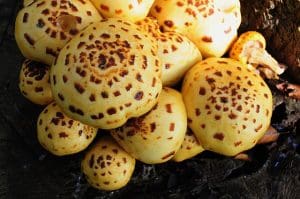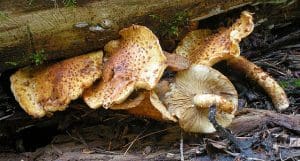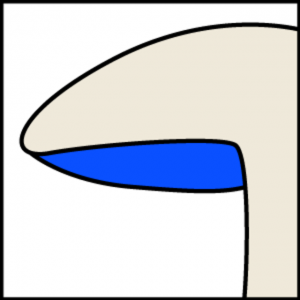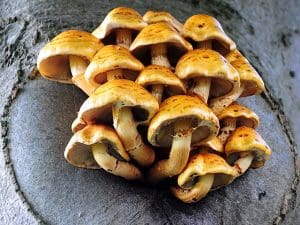Golden Scalycap / Spring / Autumn / Inedible
Welcome to an exploration of nature’s intricate beauty as we uncover the distinctive characteristics and identification features of the inedible Golden Scalycap (Pholiota adiposa).
Join us on a journey where observation and knowledge intersect. With its striking golden-brown caps and intricate scales, the Golden Scalycap presents a visual spectacle in the wild. Learn to discern its unique traits, study its preferred habitats, and understand the reasons behind its inedibility.
While this mushroom may captivate with its aesthetics, it is important to recognize its toxic nature. Through accurate identification, we can appreciate the Golden Scalycap’s place within the ecosystem without compromising our well-being. Embrace the complexity and diversity of the natural world as we delve into the realm of the Golden Scalycap, deepening our understanding of the fascinating world of mushrooms.
Scientific Name
Pholiota adiposa
Common Names
Golden Scalycaps, Chestnut mushroom
Family
Strophariaceae
Habitat
They can grow both saprophytically and as parasite on living trees. They are most often found on beech. They normally appear in large tufts close to the ground.
Description
An occasionally find in the North of England there are more down in the south. There are question marks regarding edibility, many species of Pholiota are toxic and they quite hard to ID so I wouldn’t recommend them for the kitchen.
Identifying Features of the Golden Scalycap:
Cap:
Convex and then flattening out with age. They are yellow with brown scales, the scales are more concentrated towards the centre. They are very greasy or slimy to touch. Up to10cm in diameter.

Stem:
They are a similar colour to the caps and are covered in scales (which are fragments of the universal veil) Up to 6cm long, the stems often join at the base. In young specimens there is sometimes a faint ring.

Gills:
The gills are pale yellow when young, they soon darken and then become rusty as the spores mature. They are crowded and adnate.

Smell:
No strong smell.
Spores:
Reddish brown.
Known hazards
Some older books list them as edible but it’s not a mushroom that I eat, many species of this family are known to be toxic.
Potential lookalikes
They are quite hard to identify and look similar to other Pholiota, all are inedible. The most common is the Shaggy Scalycap (Pholiota squarrosa) but this has a dry cap.
They could be confused with Honey Fungus (Armillaria Mellea) but these have a white spore print and their gills don’t darken with age.
Extra Notes
The name Pholiota means scaly and adiposa comes from the Lain adeps which means lard or grease in reference to the texture of the caps.
Resources:
https://en.wikipedia.org/wiki/Pholiota_adiposa







Leave a Reply
You must be logged in to post a comment.